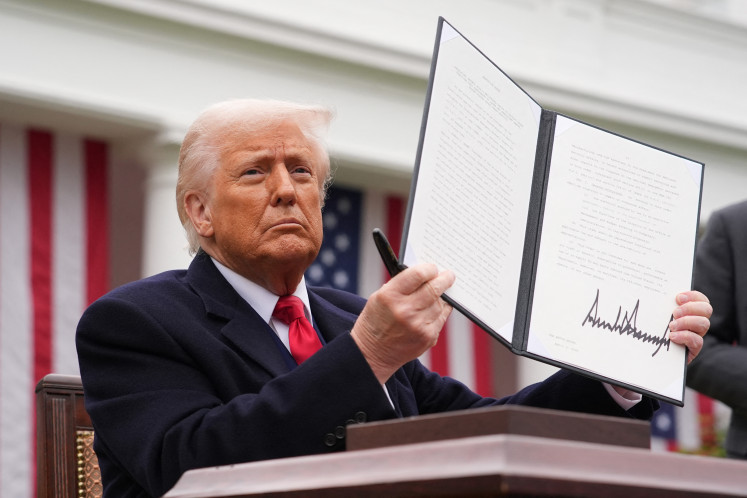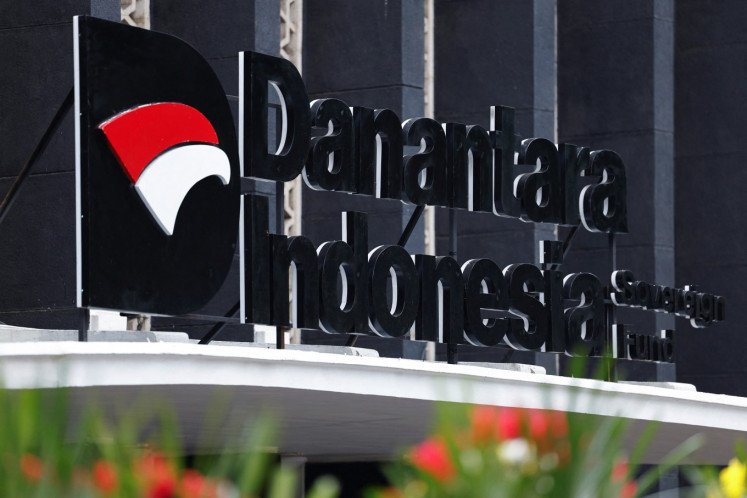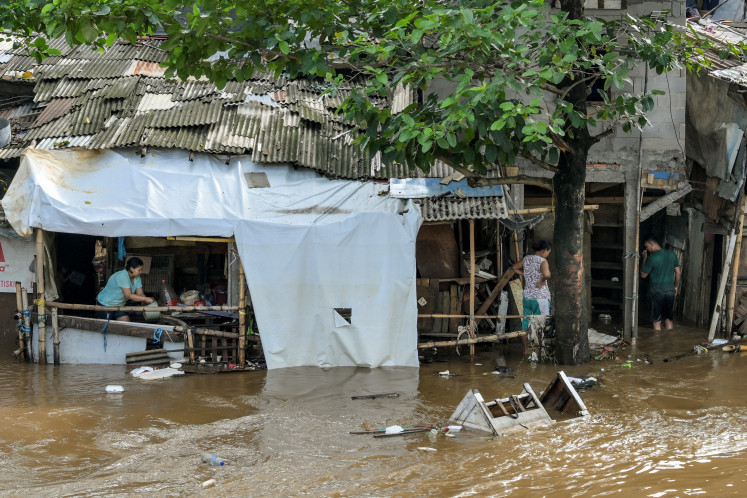Popular Reads
Top Results
Can't find what you're looking for?
View all search resultsPopular Reads
Top Results
Can't find what you're looking for?
View all search resultsFour desalination plants start operation in Thousand Islands
In an attempt to deal with water scarcity on Jakarta’s outer islands, the city administration inaugurated seawater desalination plants on four islands in Thousand Islands regency on Wednesday
Change text size
Gift Premium Articles
to Anyone
I
n an attempt to deal with water scarcity on Jakarta’s outer islands, the city administration inaugurated seawater desalination plants on four islands in Thousand Islands regency on Wednesday.
The desalination plants, which use the Seawater Reverse Osmosis (SWRO) system, are located on Payung, Pramuka, Panggang and Kelapa Dua islands. Construction of the plants commenced last year.
The SWRO system converts seawater into freshwater by using a semipermeable membrane. The process is energy-intensive as it involves a high-pressure pump.
Jakarta Water Management Agency head Juaini Yusuf said other technology called brackish water reverse osmosis (BWRO) was already being used on some islands in the Thousand Islands.
“But BWRO use is limited to water for drinking and cooking purposes. Water scarcity is common in the Thousand Islands, especially during the dry season, which means residents have to buy water [in plastic containers],” he said in a speech on Payung Island on Wednesday.
Instead of seawater, the BWRO treats groundwater, using a process similar to the SWRO system.
In addition to the new SWRO plants, Juaini said the agency had installed water pipes for nearly 1,000 households on the aforementioned islands so that clean water was accessible in their houses. This differs from the BWRO plant, in which residents have to visit the site to obtain treated water.
The SWRO water treatment capacity is 0.25 liter per second (lps) on Payung and Kelapa Dua islands, 3 lps on Panggang and 1.5 lps on Pramuka.
Juaini said one desalination plant, constructed using the city budget, cost between Rp 20 billion (US$1.4 million) and Rp 40 billion, depending on the production capacity.
“A plant with a 0.25 lps capacity costs around Rp 20 billion. The larger one that serves up to 1,500 households [3 lps] costs around Rp 40 billion,” he said.
An SWRO plant has been in operation on Untung Jawa Island since 2017, constructed by the Public Works and Housing Ministry.
Juaini said the administration was currently building three other SWRO plants to serve Tidung, Kelapa, Harapan and Lancang islands. Construction of an SWRO plant on Sebira Island will commence in 2020.
The administration has allocated a combined Rp 181.78 billion for the construction and maintenance of SWRO plants in Thousand Islands since 2016, according to the city administration website apbd.jakarta.go.id.
City-owned water company PAM Jaya president director Priyatno Bambang Hernowo said on the same occasion that the treated water met the drinking water standards stipulated in a 2010 Health Ministry regulation on drinking water.
He added that the water rate for customers in the Thousand Islands was based on Jakarta Gubernatorial Regulation No. 34/2018 on water rates.
He said households that were supplied water treated by the reverse osmosis system would be charged Rp 32 per liter.
Households on the four islands will initially have free water until the end of December, after which they will be charged, Priyatno added.
Payung islander Sunenah, 34, said she had long relied on a well she built for her family’s daily water needs, but it often ran dry during the dry season.
“[During drought], I have to buy water in containers for our family of five. One container full costs Rp 4,000,” she told The Jakarta Post on Wednesday. Meeting her family’s water needs previously cost her Rp 24,000 each day.
With the new facility, she expressed gratitude for the better quality of water and lower price than she previously paid.
Water management expert Firdaus Ali from the University of Indonesia acknowledged that remote islands commonly lacked water sources and electricity.
“But since water is a basic need, seawater desalination like the SWRO is a solution. The system is used globally, including on islands in Indonesia,” he told the Post.
He pointed out that although it was beneficial for people to have access to clean water, the system presented a challenge — the high energy cost of operating such a highly pressurized system.
Therefore, Firdaus said the government should also promote renewable energy, such as solar and wind energy, or wave power, “so that the high energy costs can be offset by renewable energy, especially on remote islands”.
The costly process, which may be 10 times more than that of a conventional water treatment system, meant the system was not an option for people living in Jakarta on the mainland, Firdaus said.
“Harvesting rainwater and treating river and reservoir water are the best options for water sources [in Jakarta],” he said.
___________________
Thousand Islands desalination plants
• Kelapa Dua capacity: 0.25 lps for 111 households
• Panggang capacity: 3 lps for 520 households.
There are plans to expand it to 664 households next year.
• Pramuka capacity: 1.5 lps for 274 households.
There are plans to expand it to expand to 380 households next year.
• Payung capacity: 0.25 lps for 49 households.
Source: Jakarta administration










